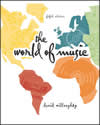Chapter 13 Music of the Romantic Period (Nineteenth Century) Romantic genres: the symphonic poem, art song, program symphony, and solo piano pieces—and the music of Schubert, Chopin, Tchaikovsky, and many others The Romantic period is marked by a highly individual and personal approach to composition. Aristocratic patronage declined, and composers sought entrepreneurial ways of achieving success, such as conducting, performing, writing, publishing and touring. They were dependent on the public, their audience, for survival as professionals. The public craved virtuosity and dazzling displays of technical skills; they were enamored by "star" personalities. Composers, performers, and conductors became celebrities. Music was more and more technically demanding and not intended for amateur performers. The public demanded professionals, and musicians needed training. Music teaching became an established profession. Musical characteristics of Romantic music dwell on polarities between large and small ensembles, experimentation and tradition, nationalism and universality, and absolute and program music. Music progresses through the nineteenth century from essentially diatonic, symmetrical, predictable music derived from the Classic aesthetic to music with a chromatic, unstable, dissonant, and more highly expressive character. The genres and forms that became established in the Classic period served as flexible models for most Romantic composers. Forms were not as clear or precise. Many exceptions to established practices were made as composers sought new ways of expressing their feelings. New or significantly expanded genres are the symphonic poem, overtures and preludes as major concert pieces, character pieces (solo piano pieces and art songs), and ballet. German poetry, Shakespeare, and other literary sources served as sources of inspiration for many nineteenth-century composers. The chapter acknowledges that music from the Classic and Romantic periods—roughly 150 years—is by far the dominant repertoire today in classical concerts and recitals, in the production of recordings, and in the programming on classical radio stations. Many of the composers of this music are well known to large numbers of people, including nonprofessional musicians. At least thirty composers from the nineteenth century can rightly be listed among the greatest of composers of Western European art music. Seven of the most important composers are discussed in this chapter. Goals for Listening - Recognize diatonic melodies
- Recognize diatonic consonant harmony
- Identify expressive qualities
- Recognize chromatic tension and resolution
- Recognize chromaticism in the melody
- Identify inner and outer "voices"
- Describe thematic organization
|



 2003 McGraw-Hill Higher Education
2003 McGraw-Hill Higher Education